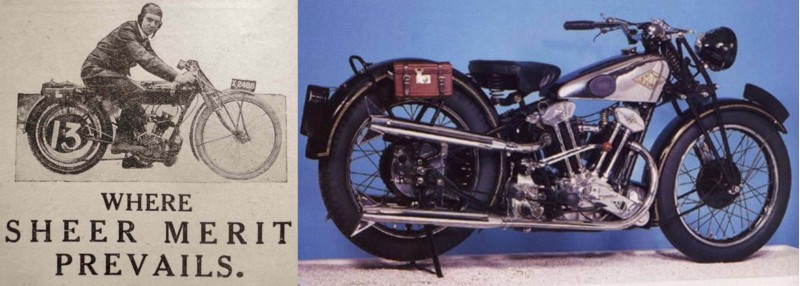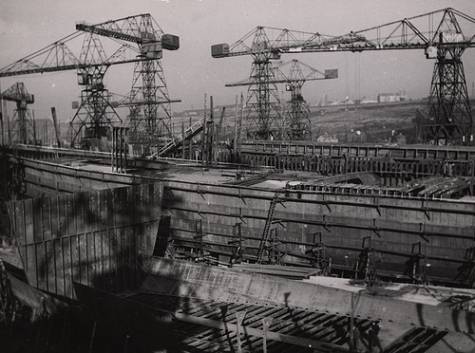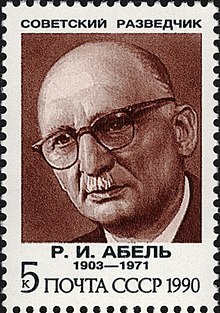Another rôle model
Norman Welch (Grandpa Welch) was already Assistant Yard Manager at the huge Wallsend Shipbuilding Yard of Swan Hunter & Wigham Richardson Ltd, on the River Tyne, one of the most prominent management positions in the City when he met my grandmother. They were very close friends for years before they were married in 1933 and probably set a few tongues wagging.
Norman was the sixth child in an artistic family. His father George was a vocalist & artist and was employed as a Clerk in Durham Cathedral. But he died early, in his 50's, leaving his wife Kate to manage the family. Two of Norman's sisters taught music, one of them violin.
By the age of 20 Norman was an apprentice shipbuilder and one of his brothers, Arthur, was a motor mechanic when this was a very unusual job. Only about one person in 200 owned a car before the First World War and cars were very expensive.
It is said in the newspaper article (below) about Norman that he was distantly related to Sir John Hunter, Chairman of Swan Hunter & Wigham Richardson Ltd, and it was there that he became apprenticed. This was because his older sister, 'Aunt Nell', was married Thomas Charles Hunter,
second son of Sir George B Hunter, one of the founders of Swan Hunters.
In due course the future Company Chairman: John, would serve his time under my Grandpa Welch in the same tradition that Charles Parsons served his time on the shop floor at G W Armstrong.
He undoubtedly influenced many of my father's opinions and directed his education. According to my mother he also saved her relationship with my father. So Grandpa Welch's influence on me was not genetic but existential and cultural.
As a younger man Norman Welch was a motorbike enthusiast. He owned a NUT 7 hp machine, manufactured in Newcastle by the bespoke motorcycle builders and designers Hugh Mason and Jock Hall. Between 1912 and 1933, their motorcycle designs were very successful, winning and placing in International TT racing.

NUT motorbike advertisement and a restored NUT 680cc machine similar to Norman's
Norman won numerous trophies for speed trials, dirt track and road races before an accident which resulted in a steel plate being inserted in his leg.
He was also a rugby enthusiast and encouraged my father to play. I have inherited a number of pewter tankards inscribed to him each year as President of the Rugby Football Club.
He collected antiques had a valuable collection of Roman coins, some of which he had found fossicking along Hadrian's Wall. These collections remained in England after his death and those things not sold must now be with one of my two English cousins.
Another life-long interest was Scouting, particularly assisting the production of "Gang Shows" which the Scouting Organisation put on in aid of charity.
He owned a flat-nose Morris Oxford four door tourer, a significant possession when cars were still very rare. In 1929 he and Stephen travelled to the Morris Oxford Works at Cowley in the South of England to pick this up off the production line.
Stephen learned to drive it at the age 12 on condition that he kept the car cleaned and serviced.
Before his marriage to Madge, Norman took the family on holidays in his car. He and the boys would camp while Madge and the girls stayed in a local hotel.
There was no impropriety in this. My mother wrote of him at around the time of his death: Stephen's personal memory of 'Dad Welch' is one of love and gratitude to a man who took him under his wing when he needed a father figure and was always there for him without ever being overtly demonstrative. It was he who healed a breach between us during the early days of our friendship and he was best man at our wedding. She would not have written these exact words without seeking my father's approval.
In due course he became Yard Manager and was known at Swan Hunter, and to the Navy, as The Admiral.

Swan Hunter & Wigham Richardson Ltd 1946
My father told me that he knew several thousand workers by name and ability and could equally ask after many of their families, accurately remembering their domestic circumstances, as about the progress of their current task.
An interesting side-story:Among these employees was William August Fisher who would later become better known as the spy: Rudolf Abel. William's parents were exiled German speaking Russians living in Newcastle. Fisher's father Heinrich had been an engineering professor and taught and had agitated against Imperial (Tsarist) rule alongside Vladimir Lenin (Vladimir Ilyich Ulyanov), at the Saint Petersburg Technological Institute. He was arrested by the regime in 1896 and internally exiled. And in 1901 he fled with his family to England. It's thought that Heinrich remained active and chose Newcastle as a good base for gunrunning from the northeast coast to the Baltic countries. Young William, their second son, was technically literate from an early age and a radio amateur. He won scholarships to Whitley Bay High School and Monkseaton High School. After school he got a job as an apprentice draftsman at Swan Hunter's and attended Rutherford College. At the time my grandfather's close friend Bill Buckle, who had introduced Norman to my grandmother, was rising to become chief draftsman at Swan Hunter's. Bill would certainly have known William who was 14 years older than my father. In 1921 young William left Swan Hunter's and moved to Russia with his family. Obviously, Britain, the US and Russia (the USSR) were allies in this at the time. In 1948 when the war was over Vilyam 'Willie' Genrikhovich Fisher, now a Colonel in the KGB, was redeployed as a spy to the United States where, as Rudolf Abel; AKA Andrew Kayotis (Codename: MARK), he played a part, still undetermined, in the theft of US technical secrets on behalf of the Soviet Union. In 1957 he was caught and, after being subjected to the usual persuasions, was tried and sentenced to 30 years imprisonment. Four and a bit years later, on February 10, 1962, he was swapped for US spy plane pilot Francis Gary Powers. But because he was very well trained and the Americans failed to discover his real name, he became known as the spy who never talked (unlike Powers). On his return the USSR he was awarded the Order of the Red Banner. And his face appears on a Russian stamp - as Rudolf Abel (a jibe at the Americans perhaps).
He was reunited with his family and became popular as a lecturer on espionage before contracting lung cancer and dying at 68 years of age. Part of his later life is depicted in the film 'Bridge of Spies' See more at: The U-2 Incident on this website
|
As Yard Manager of the shipyard Norman was responsible for building many famous ships particularly destroyers, cruisers and minesweepers. He went on the sea trials of all 'his' ships. There was a large collection of polished wooden gun plugs used to stop the muzzle of the guns on ceremonial occasions, each with the crest of a warship that he had supervised being built. Before the War Stephen was taken along on some of the ship trials.
During the War the Yard broke all British records for getting ships to sea. Pre-war it took two years to build a destroyer during the War his Yard was building a riveted destroyer or similar sized Naval vessel every six months. This was extraordinary for a warship.
Using a production technique developed by the nearby Palmer's shipyard at Jarrow, also on the Tyne, the Americans, who did not suffer regular German bombing raids, could build a 'liberty cargo ship' in a month and a half. But only by substituting welding for riveting. Much of this welding was done by hand in the days before x-ray or ultrasonic testing and was notoriously unreliable. The 'liberty ships' had a reputation for breaking up and sinking, irrespective of enemy action.
But it was just the teething problems that often assail new technology. Now with automated welding and a range of modern weld-testing techniques, riveting has virtually disappeared and all ships and most steel structures are welded.
The last ship Norman was responsible for, before he retired, was a county-class destroyer H.M.S. London (D16) launched in 1961 and completed in 1963. Those of you with a keen eye will remember that the County class Destroyers were the last British naval ships to be equipped with Parsons turbines.
H.M.S. London - underway (Wikipedia Commons)
She was pretty but not particularly noteworthy when compared to the career and battle honours some of his wartime ships. She was decommissioned in 1981.
Her first Captain wrote:
WallsendA ship, like everything else, has a birthday, and although she may be deemed to exist after her keel is laid, it is not really until she is launched that she begins to develop a personality of her own, once she is afloat in her proper element. Thus, the story of London starts on 7th December, 1961, when her Royal Highness the Duchess of Gloucester performed the commissioning ceremony on a grey day at the Wallsend Shipyard of Messrs. Swan, Hunter and Wigham Richardson's... The hand of 'Admiral' Norman Welch (with a little prompting) guided us towards completion: his memory was a little uncertain, but he was pretty certain that we were the hundredth warship with which he had been concerned. He retired shortly after we commissioned at the age—according to the best available sources—of about 75. We wish him well in his retirement. Each of us, according to trade, will remember one or other of our associates better than others, and one cannot mention them all ... J. C. BARTOSIK Captain |
For his efforts as Assistant Shipyard Manager during the War Norman received an MBE.

...to Our trusty and well beloved Norman Welch Esquire Greeting...
Norman's MBE awarded by George VI (Gazetted on 6 January 1946)
Thus, it was Grandpa Welch who was responsible for my father getting the required qualifications to become an electrical engineer and probably for him becoming a fighter pilot too.
As a result, my father took his name for a period after his marriage to my grandmother, and for a short time was known was known as Stephen Welch. I discovered this when I was taken on a tour of CA Parsons facilities where my father had worked as a young engineer. His ex-colleague and friend remembered him as Stephen Welch. But he was certainly Stephen McKie again by the time my mother met him, a few years later.
Norman (Grandpa) Welch died at home at the end of 1971 at the age of 81 three and a half years after Madge.

Madge had died in 1968 at the age of 82. Both had been cared for in their latter years by my father's sister, Margaret Domville McKie. So, Margaret's siblings agreed that she should inherit the house at 37 Osborne Avenue. It was subdivided to supplement her income.
More information provided by Patricia (Trish) Taylor (nee Chapman) in January 2021
Dear Richard I found your history of the McKie family really interesting and because of another lockdown in the U.K. have had plenty of time to study it and think about anything I could add. It really brought back memories of living at 37 Osborne Avenue, that's for sure! I have information about Madge’s family, the Slingers, but will send that separately (now incorporated above). First of all, I thought these photos may be of interest. You might have copies but worth sending anyway.
Wonderful photo of Norman Welch in his motor bike gear.
Grandpa Welch on bike as a young man.
Group in garden: Norman Welch is the young man in back row, on right.
Group in garden at 31 Osborne Avenue.
The photo says “Stephen’s 21st” on the back but wasn't he born in December? Not exactly a wild 21st.
Grandpa in his allotment in 1960’s.
Finally, the garden at no 31, with Stephen and Vera in the porch on the far left.
You wrote about the paying guests that Madge took in as a widow and when married to Norman, a much more common thing to do in those times. Joan had happy memories of a genteel lady who still wore those elegant ankle boots that were buttoned all the way up. To Joan’s delight she taught her how to use a button hook. Fascinating to a child of about six. Grandpa’s Roman coins were sold when Margaret moved out of no. 37. They brought very little money as there was no information about where they had come from and as usual, when you’re a buyer, things are valuable but as a seller they are not! Margaret and Joan were educated at The Central High School, a highly regarded independent school for girls within walking distance of their home, 16 Brandling Park, Jesmond. (postcode NE2 4RR in case you're interested). They moved there from Monkseaton. It was a beautiful house but too many stairs according to Margaret, Joan and Madge. I don't know when they moved from there to Osborne Avenue- presumably when Madge and Norman married. Did Stephen ever tell you stories about Mrs Schofield? She was a friend of Madge’s who had "second sight”. She would come for afternoon tea and in the middle of a conversation would suddenly come out with some prediction. Margaret and Joan told me several of the things she said which came true and one in particular might interest you. When Stephen was young- before the war- she told Madge that his back was going to be a problem for him all his life. The family thought that was a strange thing to say but it certainly came true! Very odd. Mrs Schofield eventually became an active church goer and stopped coming out with her predictions. She said it wasn’t God’s will for us to know the future. Will finish now- hope you find it interesting! Will send brief information and photos of our great grandparents soon. |


 Madge on the beach in 1912. I hope it was a cold day!
Madge on the beach in 1912. I hope it was a cold day!




